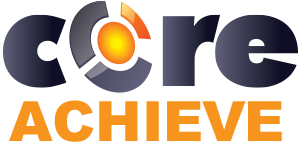Navigating HR Transitions: A Guide to Smooth Organizational Change
November, 09 2023
Other posts:
Enhancing Team Dynamics for Effective Group Decision-Making with LMS Integration
Organizations increasingly rely on collaborative efforts to solve complex problems, innovate, and adapt to change, but how do we ensure that collaboration is happening.
Maximizing Small Business Potential with Training Technology
Training technologies can push small businesses ahead of their competitors, but what are the factors that go into choosing the right technology?
Unlocking Employee Potential: The Transformative Benefits of an Interactive Learning Management System (LMS)
Interactive training allows for unlocking employee potential, but how is it done?
Building a Robust Sales Pipeline with Training
Every organization wants a streamlined sales pipeline, but building one requires a series of interlocking activities with one of the most important being training.
Strategies for Adapting In-Person Training to Online Platforms
Online training is one of the most flexible ways of delivering training across organizations, but how do you even begin to adapt in-person training into online?
Change is a necessary activity for organizations to stay competitive and relative. However, change can be a catch-22, don't keep up and the organization will fade, try to change and the organization could flounder in it.
Almost every organization goes through changes, which isn’t a bad thing, but how they are handled can be. Human Resources (HR) plays a pivotal role in steering an organization through these transitions. Navigating HR transitions, whether they involve restructuring, mergers, new leadership, or changes in company culture, is essential for maintaining employee morale, engagement, and overall business success.
The Role of HR in Transitions
Change Management:
HR is at the forefront of any organizational transition. Whether it's a merger, acquisition, downsizing, or leadership change, HR professionals are responsible for managing these transitions effectively. They help ensure that change is executed seamlessly and without compromising employee morale.
Culture Transformation:
Shaping a company's culture is one of the HR department's most important roles. During transitions, HR needs to drive cultural changes that align with the new direction of the organization. This can be a delicate process that requires careful planning and execution.
Talent Management:
HR professionals must assess the organization's current talent pool and identify gaps that may need to be filled during a transition. This could involve recruiting new talent, retraining existing employees, or both.
Navigating HR Transitions Successfully
Clear Communication:
During any transition, effective communication is paramount. HR needs to keep employees informed, address concerns, and provide a clear understanding of the changes taking place. Open and transparent communication builds trust and reduces anxiety.
Change Management Training:
HR can develop and deliver change management training programs to help employees adapt to new circumstances. These programs should offer practical advice, resources, and emotional support during times of change.
Leadership Development:
Transitions often require new leadership or a shift in leadership style. HR can support these changes by providing leadership development programs and coaching to ensure leaders are equipped to guide the organization through change.
Cultural Alignment:
Aligning the company culture with the new vision is a core responsibility of HR during transitions. This involves revisiting values, mission, and vision, and ensuring they resonate with the evolving direction of the organization.
Employee Wellbeing:
HR should be vigilant in monitoring and addressing employee stress and burnout during transitions. Employee wellbeing programs, counseling services, and support networks can be beneficial.
Even with all these tips for effectively navigating transitions, it still begs the question what tools can HR professionals use to smooth transitions?
Tools to Ease Changes
Learning Management System (LMS):
An LMS is a perfect tool for easing changes in an organization as it provides one place for training for all employees regardless of position. HR professionals can use an LMS to train employees for the changes they need to happen.
Across-Organization Messaging App:
Communication is necessary for a smooth transition within organizations. Even whenever not in a state of transition lacking communication will impact an organization’s productivity, during a transition, however, it’ll all but destroy it. Therefore, a messaging app that can be used organization-wide is a necessity.
Customer Relationship Management (CRM):
A CRM is software used to manage almost, if not all, of an organization’s interactions with customers or potential customers. This is critical in a period of change because so much could be lost, like accounts that only one team member has access to. Suddenly, the organization’s messaging will become fractured across many platforms and will take a lot of resources to realign.
HR transitions are an inevitable part of organizational growth and adaptation. Successful navigation of these transitions requires strategic planning, effective communication, and a commitment to employee wellbeing. By taking proactive measures and working closely with organizational leadership, HR professionals can guide their companies through changes with grace and confidence, ultimately ensuring long-term success. Navigating HR transitions is not merely a role for HR; it's a crucial function that influences the entire organization's future.
Get started with CoreAchieve today for free.
Photo by Nik on Unsplash

Leave comment: